Miami 2014 comms #2: VHF, AIS & the app connection
There is still an amazing number of boats that can't use the excellent DSC distress feature that's been built into every fixed VHF marine radio sold in the U.S.A since 1999. Their radio either hasn't been interfaced with a GPS or hasn't been programmed with the owner's MMSI number, or both. I've heard Coast Guard rescue center personnel report that a DSC alert can work beautifully to quickly identify and locate a boat in trouble, but that they rarely see valid DSC alerts. So before discussing advances in VHF (and AIS), let's note how companies like Standard Horizon and Icom are helping to make working DSC a pervasive reality (finally)...
First note the "WARNING! DSC NOT AVAILABLE" squeezed onto the Eclipse DSC+ screen above, and particularly how the operator must acknowledge the warning before using the radio. Standard Horizon's Jason Kennedy tells me that some radios on the market don't yet include this mandated acknowledgement, and I agree that they should (and that boaters who complain about it deserve a lecture on the costs and frustrations of failed search and rescue operations). Kennedy remains a little miffed that Standard Horizon recalled radios last year to fix much more minor interface issues than this, but the authorities have apparently still not insisted that all manufacturers catch up with the improved DSC interface requirements of ITU-R M.493-13 (explained here on Panbo).
The DSC warning can be more detailed on the big screen of the new Standard Horizon Matrix AIS/GPS, but perhaps more important is that little GPS antenna bump at upper left. The sign should read "VHF with AIS and GPS," which of course means that no installer has to make an annoying NMEA 0183 bare wire connection for this radio to know where it is and be able to share that knowledge with the Coast Guard (or your nearby boating friends). The internal GPS, still unique to Standard Horizon in fixed radios, also means that DSC can work even when no other electronics on the boat are powered up.
Also impressive was the Icom M506 recently detailed here. The Miami show was my first chance to fool with the user interface Icom has been using in new models, and I think it looked especially good on that giant screen. Entering your MMSI seemed very easy, for example, and I'm happy to add that some influential people in the boating world are questioning the strict rule, making it impossible for a boater or installer to change a radio's own MMSI when a vessel changes hands (or operating areas in some cases). It seems like an unnecessary annoyance when you think it through, and I hope to report soon on a movement to change that rule.
For the M506 models that include a NMEA 2000 interface, getting GPS to the radio should be plug and play simple, and the same connection should also allow DSC calls to appear on chart plotters (another reason to get that distress button working). M506 models with AIS receivers should be able to distribute target info, including AIS MOB alerts, over N2K (and/or NMEA 0183) and hopefully, the models without AIS receivers will still be able to display it and place direct DSC calls to targets if they see AIS data coming in through a NMEA port. So, it was nice to discover that the M506 has a full screen AIS radar-style display option, as well as the partial screen one you'll see elsewhere.
The Simrad RS90 black box VHF system seems quite similar to the RS35 radio and HS35 wireless mic combo introduced in 2012, except that the 90 can support four fixed mics and two wireless ones. It also has a replay-last-call feature similar to that included on the Icom M506. This system could have gone in the entry about Miami glass bridge advances and is obviously designed to compete with the Garmin VHF 300 series and the modular Ray260. Apparently, the RS90 will not ship with DSC calling to AIS targets, but "future features include DSC calls to AIS targets from handset and compatible MFD plus advanced intercom facilities." The RS35 (I'm about to finally test) is in the same situation, I think.
McMurdo now offers AIS transponders and receivers, including this Class A M5 color screen model, which is purportedly the first transponder {correction: first Class A transponder} to show AIS MOB alarms (like the many MFDs that can alarm on Personal AIS Beacons built by McMurdo and others). Incidentally, the Kannad R10 AIS MoB Beacon is now sold as the McMurdo SmartFind S20, which seems to fit the large ambitions of the newly formed McMurdo Group.
While McMurdo's AIS transponders seem to be sourced from Alltek Marine Electronics, they don't yet offer the Camino-108W Class B model sold under Alltek's own Amec brand. What's noteworthy about the 108W is that it has both NMEA 2000 and WiFi interfaces, which means it can potentially supply tablet charting apps with AIS, GPS, and most any other boat data available on a boat's N2K network. Alltek already has some expertise at N2K messaging and Milltech Marine already offers the Camino 108W, but so far the manual doesn't say anything about which apps can get what data over the WiFi.
Meanwhile, DigitalYacht just announced NavLink US, which is apparently a version of the recently reviewed SeaNav app that DY will support in conjunction with its WiFi AIS receiver and NMEA WiFi bridge devices. DigitalYacht founder Nick Heyes has put together an excellent 10 minute YouTube presentation that explains how these devices and NavLink can all work together. (Speaking both to boaters and installers, Nick also makes a good case for how this sort of WiFi boat data link can bring new life to even older marine electronics systems.)
Of course, Vesper Marine also sees how a WiFi Class B AIS transponder can serve as the gateway between apps and AIS/GPS data as well as other boat data. I've already experienced some of that while testing the WatchMate Vision, and I returned from Miami with the perhaps under-appreciated WatchMate XB8000 to test. I'm looking forward to seeing how Vesper now passes along "a wide range of wind, depth, speed, heading, log and temperature PGN's." In Miami I also saw the ambitious new app NavPlay looking good in a demo. NavPlay will support Jeppesen C-Map charts and already has a marketing partnership with Vesper. It looks like the two companies have a complete iPad WiFi transponder solution that can even integrate with autopilots.
Finally, Simon Tucker -- CEO of behind-the-scenes AIS specialist SRT Marine Technology -- wrote to say he could astonish me if we could meet somewhere in Miami...and he did just that in the press room scene below. While Tucker isn't ready to go public with interesting new SRT hardware designs, consider the company's recent acquisition of GeoVS. Check out their real-time 3D vessel traffic visualisation system and understand that it can run astonishingly well on even a good laptop.

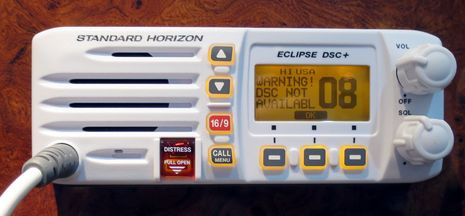
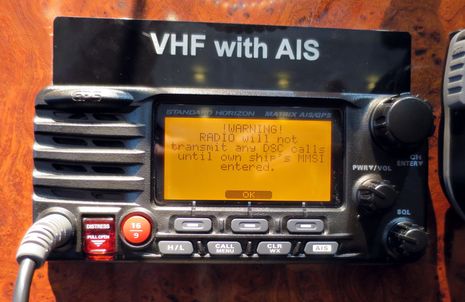
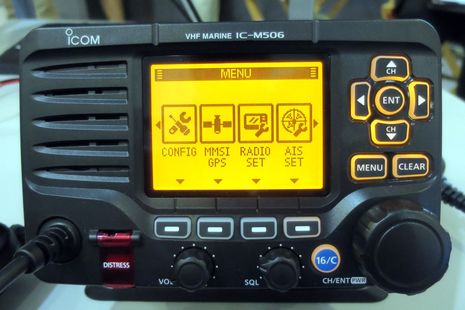
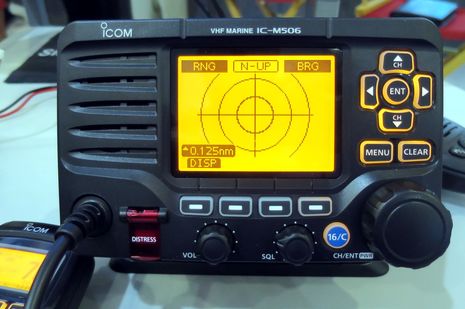
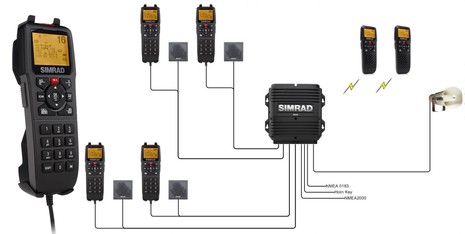
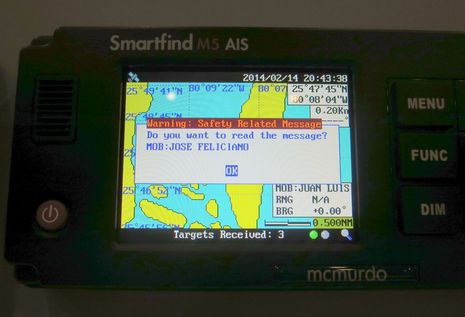
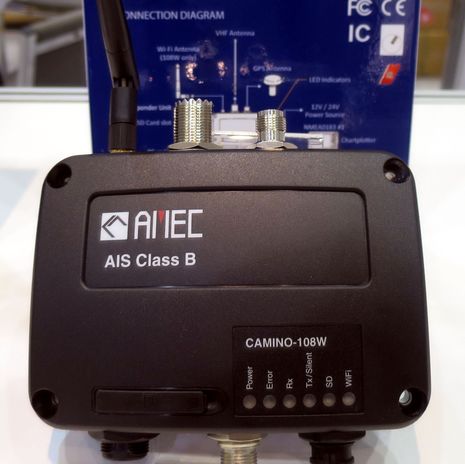
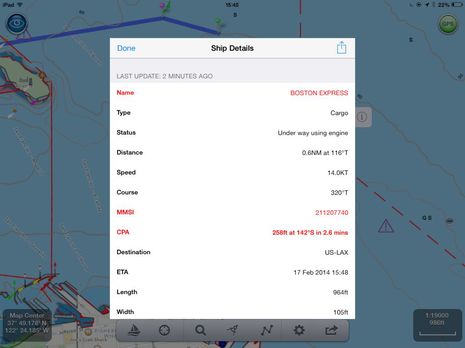
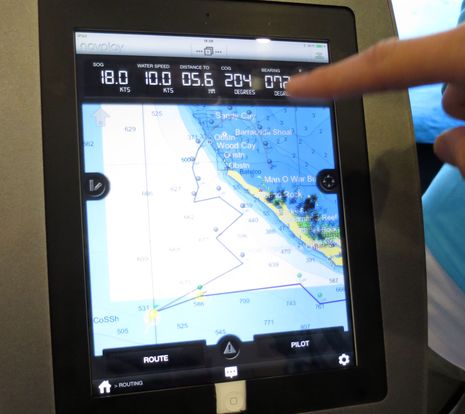
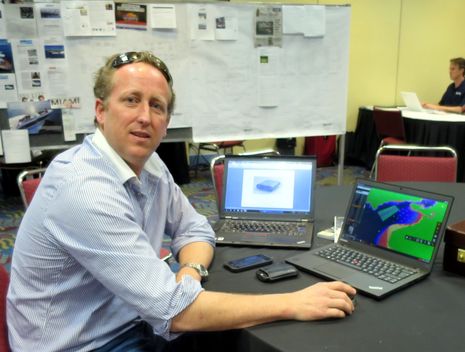
 Share
Share
The just-out issue of Marine Electronics Journal has some interesting AIS bits -- http://goo.gl/pMGrvu -- particularly the wild Wave Gliders that may need transponders because they're getting run over: http://liquidr.com/index.html